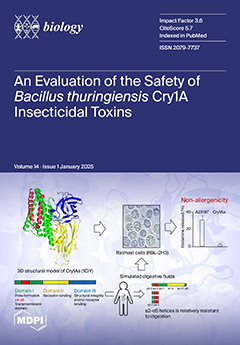This study seeks to assess the impact of varying concentrations of lysophospholipids on the antioxidant capacity, digestive performance, and intestinal microbiota of
L. vannamei. A total of 840 shrimp, with an average initial weight of 2.22 ± 0.11 g, were randomly distributed across 28 aquaculture tanks (30 shrimp per tank), organized into 7 distinct treatment groups, each comprising 4 replicates. The control group (DL2) was administered a basal diet formula supplemented with 2% soy lecithin, whereas the experimental groups received lysophospholipids at varying concentrations of 0% (RL0), 0.1% (RL0.1), 0.5% (RL0.5), 1% (RL1), 1.5% (RL1.5), and 2% (RL2). The results revealed that the total antioxidant capacity (T-AOC) level in the RL0.1 group was significantly elevated compared to the DL2 and RL2 groups (
p < 0.05). Furthermore, glutathione peroxidase (GSH-Px) and catalase (CAT) activities were markedly higher in the RL1 and RL1.5 groups relative to other groups (
p < 0.05). Superoxide dismutase (SOD) activity exhibited a significant increase across all lysophospholipid-supplemented groups when compared to the DL2 group (
p < 0.05). Malondialdehyde (MDA) levels were notably elevated in the RL0.5, RL1.5, and RL2 groups relative to the other groups (
p < 0.05). Regarding antioxidant-related genes in the hemocytes, the relative expression levels of
Nrf1,
Nrf2,
GPx,
SOD,
CAT, and
Hippo were significantly higher in the RL0.5 and RL1 groups compared to the DL2 group (
p < 0.05). Additionally, the relative expression levels of
GPx and
SOD were significantly elevated in the RL2 group compared to the DL2 group (
p < 0.05). In the intestinal tract, the activities of trypsin and α-amylase (AMS) were significantly elevated in the RL0.1, RL0.5, and RL1 groups compared to the DL2 group (
p < 0.05). Additionally, the RL0.1 group demonstrated significantly higher lipase (LPS) activity than the other groups supplemented with lysophospholipids (
p < 0.05). Furthermore, the relative expression levels of the
trypsin and
α-amylase genes were significantly increased in the RL1 and RL1.5 groups in comparison to the DL2 group (
p < 0.05). Sequencing analysis of the intestinal microbiota indicated that the incorporation of lysophospholipids resulted in an enhancement of the composition and structure of the intestinal microbiota. The functional abundance of the intestinal microbiome was primarily enriched in metabolic pathways. Overall, the incorporation of lysophospholipids into the diet exerted a beneficial effect on the antioxidant capacity, digestive performance, and intestinal microbiota of
L. vannamei, especially with the supplementation of 0.1% lysophospholipids.
Full article






